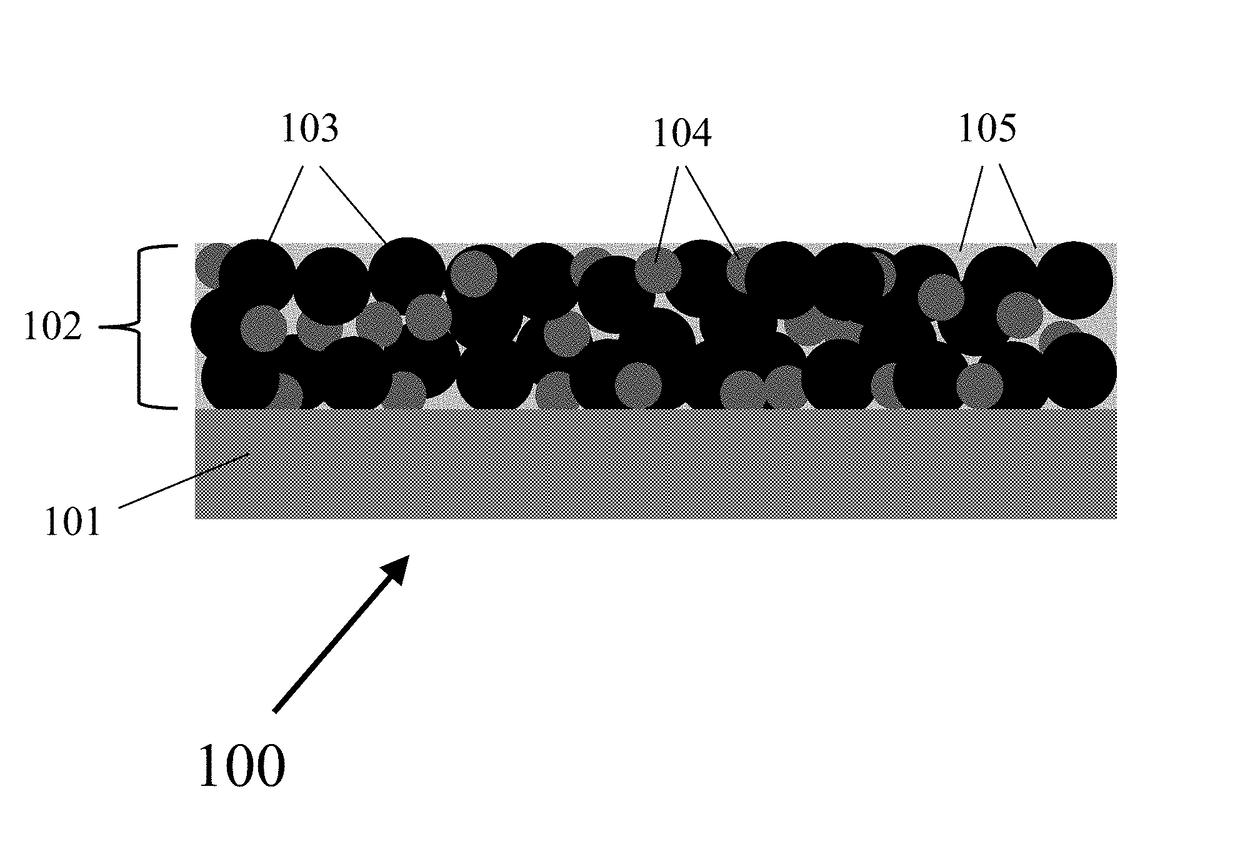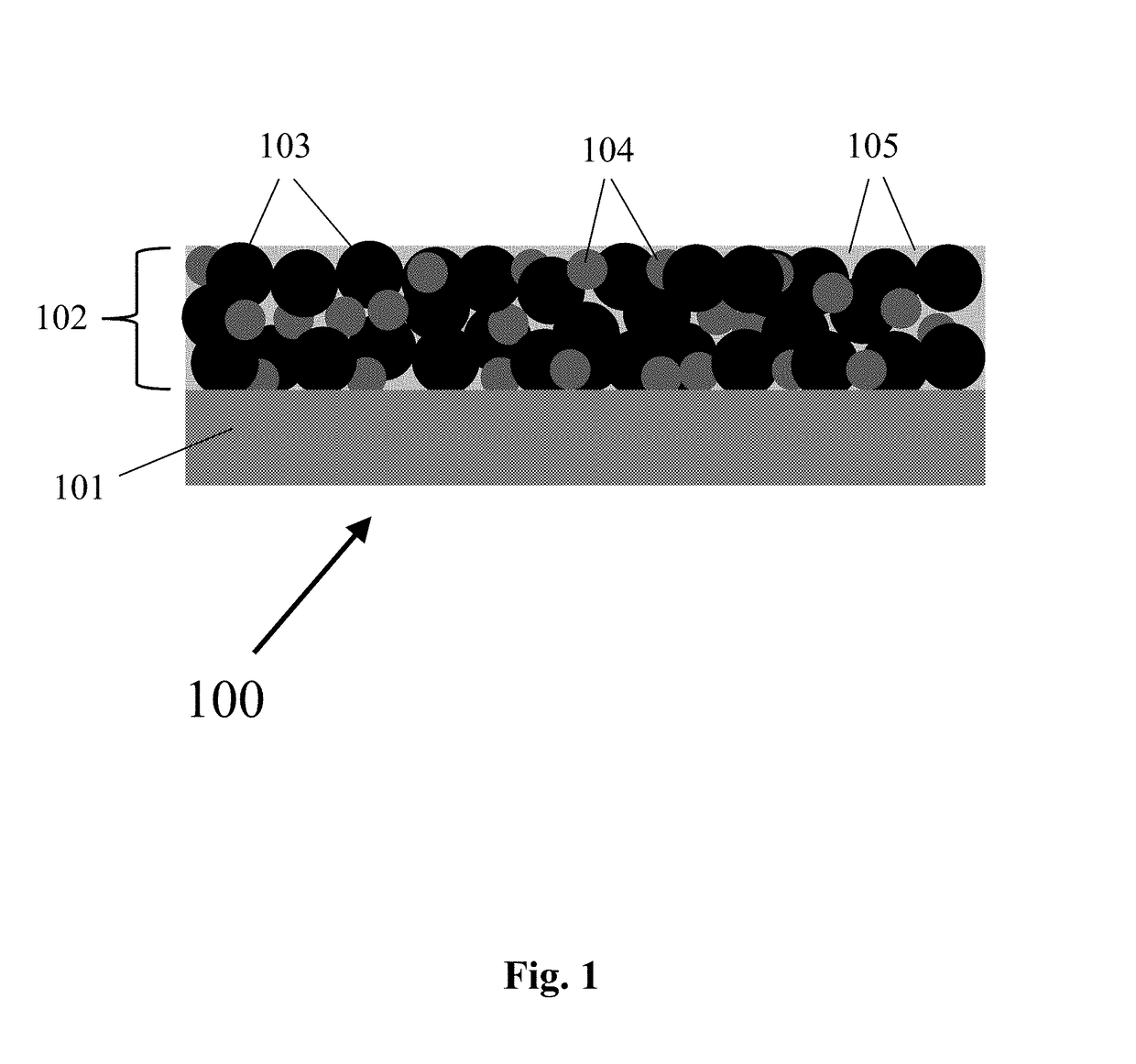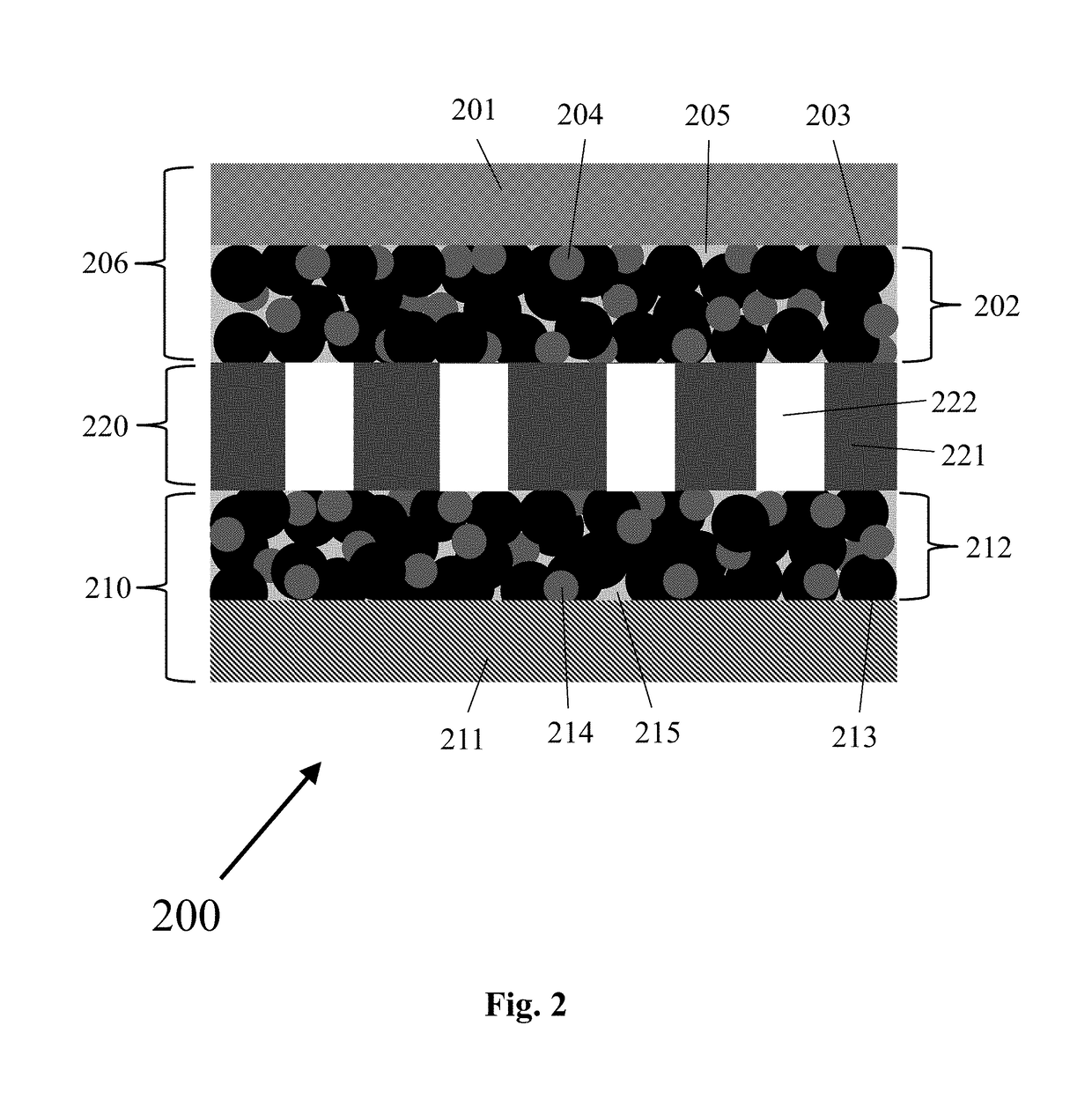Three-dimensional, porous anode for use in lithium-ion batteries and method of fabrication thereof
a technology of porous anodes and lithium-ion batteries, which is applied in the manufacture of electrodes, cell components, impregnation manufacturing and other directions, can solve the problems of limited success in realizing si anode materials with improved cycle life, low production rate of described synthesis methods, and limited use of practical commercial lithium-ion battery applications. achieve the effect of facilitating the dissolution of polymer a or polymer
- Summary
- Abstract
- Description
- Claims
- Application Information
AI Technical Summary
Benefits of technology
Problems solved by technology
Method used
Image
Examples
example 1
ing Si—C without Using a Porous BME Template
[0094]The synthesis of Si—C was first investigated via the condensation polymerization of resorcinol and formaldehyde in aqueous solution containing dispersed Si nanoparticles (˜25 nm in diameter). The synthesis was performed by combining resorcinol and formaldehyde in a 2:1 molar ratio and then diluting with water to form a 5-wt % solution. Si nanoparticles were then added and dispersed using sonication. An alkaline lithium carbonate catalyst was added and the solution was heated to 90° C., and then allowed to react at this temperature for 52 hours. The reaction mixture formed a gel 4 hours after catalyst addition. The gelled product was rinsed in acetone and vacuum-dried before being pyrolyzed under argon gas at 800° C. for 1 hr in a quartz tube furnace (at a heating rate of 10° C. / min). Although this procedure produced a Si—C material with well-dispersed Si nanoparticles, the lithium carbonate catalyst used in the polymerization also ca...
example 2
of Si—C Anode Materials Using a Porous BME Template
[0096]The three-dimensional, nanoporous silicon-carbon anode, also referred to as 3-D Si—C, was prepared using a porous BME polymer template. The nanoporous polymer scaffold was prepared by forming a blend of polyethylene (PE), poly(ethylene-alt-propylene) (PEP), and poly(ethylene-block-ethylene-ah-propylene) (PE-PEP), and then selectively removing the PEP phase with solvent extraction. The BME-precursor polymers symmetric PE-b-PEP diblock copolymer (Mn=101 kg / mol), PEP, and PE homopolymers (Mn=23 kg / mol), were dissolved in benzene at 75° C. to form a solution consisting of 45 vol % PE, 45 vol % PEP, and 10 vol % PE-b-PEP. The solution was rapidly cooled and freeze-dried to produce a solvent-free polymer blend. The blend was annealed at 129° C. for 2 hours, and then quenched in liquid nitrogen. The quench step ensures that there is no large-scale PE crystallization, which can disrupt the BME structure. The resulting BME material was...
example 3
emical Evaluation and Performance of the Porous Si—C Anode Material
[0098]Anode electrodes comprising the three-dimension, porous Si—C anode were prepared with a carboxymethyl cellulose / styrene-butadiene rubber binder (CMC / SBR, 1:1 weight ratio) and assembled into lithium-ion cells (CR2032-type coin cells) with a Celgard 2400 separator, lithium metal counter electrode, and electrolyte consisting of 1M LiPF6 in 1 / 1 / 1 volume ratio of ethylene carbonate / diethyl carbonate / dimethyl carbonate and 1 wt % vinylene carbonate (VC) (1M LiPF6 in 1 / 1 / 1 v / v / v EC / DEC / DMC and 1% VC). FIG. 8a shows the voltage profile for a lithium-ion cell comprising a porous Si—C anode and a lithium counter electrode that was charged and discharged at a C / 20 rate between a voltage range of 0.01 V to 1.0 V. This low rate was used for initial cell formation cycles and to determine the maximum available specific capacity of the anode. The porous Si—C anode delivered a discharge specific capacity of 1700 mAh / g per Si a...
PUM
| Property | Measurement | Unit |
|---|---|---|
| particle size | aaaaa | aaaaa |
| particle size | aaaaa | aaaaa |
| diameter | aaaaa | aaaaa |
Abstract
Description
Claims
Application Information
 Login to View More
Login to View More - R&D
- Intellectual Property
- Life Sciences
- Materials
- Tech Scout
- Unparalleled Data Quality
- Higher Quality Content
- 60% Fewer Hallucinations
Browse by: Latest US Patents, China's latest patents, Technical Efficacy Thesaurus, Application Domain, Technology Topic, Popular Technical Reports.
© 2025 PatSnap. All rights reserved.Legal|Privacy policy|Modern Slavery Act Transparency Statement|Sitemap|About US| Contact US: help@patsnap.com



